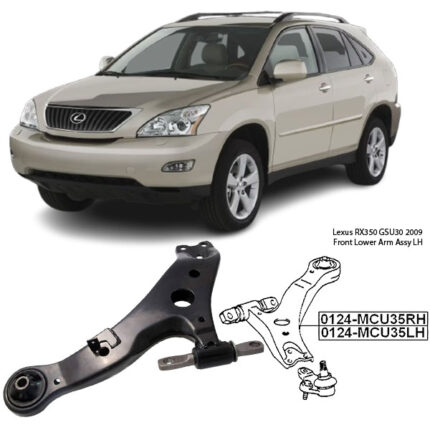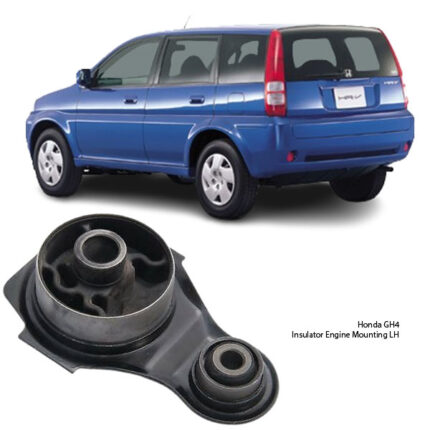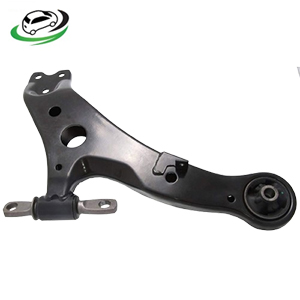-8%
Get Toyota Harrier/Lexus RX300/RX350 Front Lower Arm Assy RH
The Front Lower Arm Assembly is a structural component in a vehicle’s suspension system that connects the lower end of the steering knuckle or hub to the vehicle’s frame or subframe. It consists of several integral parts, including the arm itself, bushings, ball joints, and mounting brackets.
Benefits;
1. Suspension Stability and Control:
- Improved Stability: The lower control arm helps to maintain stability by providing a stable connection between the wheel hub and the chassis. It helps to minimize excessive movement and vibrations, particularly during cornering, braking, and acceleration.
- Enhanced Control: By controlling the movement of the wheel hub, the lower control arm contributes to better handling and steering responsiveness, allowing for more precise control of the vehicle.
2. Smooth Ride Quality:
- Reduced Vibrations: The lower control arm helps to absorb and dampen road vibrations, resulting in a smoother and more comfortable ride for passengers.
- Minimized Impact: It assists in distributing the impact of road irregularities, such as bumps and potholes, throughout the suspension system, reducing the jarring effect felt inside the vehicle.
3. Alignment Stability:
- Maintained Wheel Alignment: The lower control arm plays a key role in maintaining proper wheel alignment, ensuring that the wheels remain perpendicular to the road surface. This helps to prevent premature tire wear and ensures optimal handling and steering stability.
- Consistent Performance: By supporting the wheel hub in its correct position, the lower control arm helps to maintain consistent suspension geometry, contributing to predictable and stable vehicle performance.
4. Component Protection:
- Protection for Other Components: The lower control arm helps to protect other suspension components, such as the ball joints, tie rods, and sway bar links, from excessive stress and wear. It distributes forces evenly throughout the suspension system, reducing the risk of premature component failure.
- Longevity: By reducing stress on other suspension components, the lower control arm assembly can help to extend the lifespan of these parts, leading to lower maintenance costs and improved overall durability of the suspension system.
5. Enhanced Safety:
- Improved Stability: A properly functioning lower control arm contributes to overall vehicle stability, reducing the risk of loss of control, particularly during emergency maneuvers or sudden stops.
- Enhanced Braking Performance: By maintaining proper suspension geometry and wheel alignment, the lower control arm helps to optimize braking performance, ensuring shorter stopping distances and improved safety in critical situations.
Signs a car needs new front control am;
1. Steering and Handling Issues:
- Pulling or Drifting: If the vehicle tends to pull or drift to the right side while driving, it could indicate a problem with the right front lower arm assembly. This occurs due to irregular wheel alignment caused by a worn or damaged control arm.
2. Uneven Tire Wear:
- Inner or Outer Tire Wear: Worn or damaged front lower arm assemblies can lead to uneven tire wear, particularly on the right front tire. Look for signs of excessive wear on the inner or outer edges of the tire tread.
3. Vibrations and Noise:
- Vibration in Steering Wheel: Excessive vibration felt in the steering wheel, especially during acceleration or braking, can be a sign of a worn or damaged front lower arm assembly.
- Clunking or Knocking Noise: A clunking or knocking noise coming from the front suspension, particularly when driving over bumps or rough roads, may indicate a loose or worn control arm bushing or ball joint.
4. Steering Instability:
- Loose or Unstable Steering: A feeling of looseness or instability in the steering, particularly when cornering or driving at high speeds, can indicate a problem with the front lower arm assembly. This can affect the vehicle’s handling and responsiveness.
5. Visual Inspection:
- Visible Damage or Wear: Inspect the front lower arm assembly visually for signs of damage, such as cracks, bends, or corrosion. Pay close attention to the ball joint and bushings for signs of wear or deterioration.
- Leaking Bushings: If the control arm bushings appear to be leaking fluid or are cracked, they may need to be replaced.
6. Suspension Sag or Sagging Ride Height:
- Uneven Ride Height: A noticeable sagging or uneven ride height on the right-hand side of the vehicle, especially when compared to the left-hand side, may indicate a problem with the front lower arm assembly.
Follow us on Facebook for more parts.





